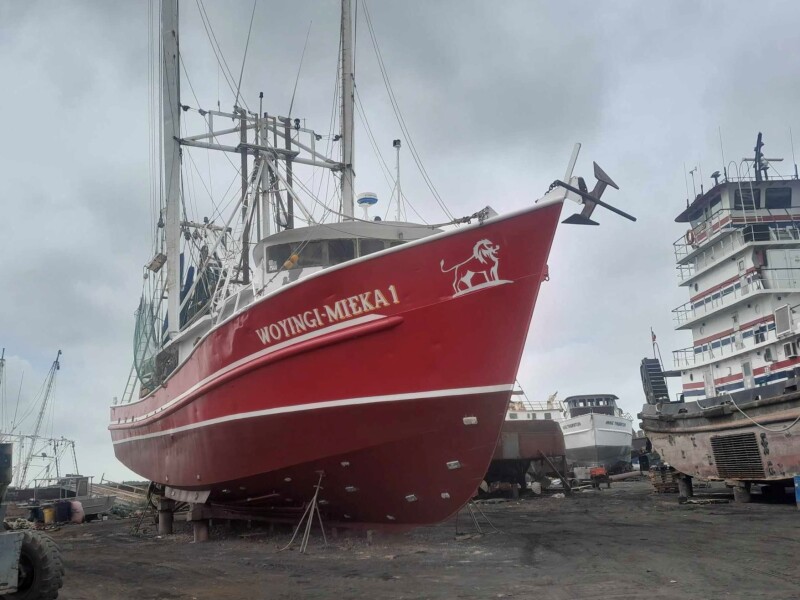While the U.S. shrimp fishery struggles through low prices and a glut of farmed shrimp entering the country, a number of West African nations are investing in expanding their wild shrimp harvests in order to feed a growing population and tap lucrative markets in Europe. Nigeria’s President Bola Ahmed Tinubu announced a new ministerial portfolio in August 2023, Marine and Blue Economy, and the country is buying refurbished U.S. shrimp boats by the dozen. “I’ve sent 17 boats over there this year,” says Joe Gazzier of Bayou La Batre, Alabama. “I’ve got 18 more ready to go.”
The 56-year-old Gazzier has spent a lifetime in the shrimp business and has been scouring the coast for vessels—mostly around 80 feet—that fit the needs of the Nigerians investing in the shrimping side of their country’s entry into the blue economy. “I’ve bought boats from around here, Mississippi, and about half in Texas, but they’re all Alabama-built,” says Gazzier.
Gazzier is refurbishing and upgrading the vessels before sending them across to Africa. “We’re cleaning them up and modifying the freezers,” he says. “Chuck Landry over in Houma, Louisiana is doing the refrigeration.”
Chuck Landry, the owner of CCL Enterprises in Houma, is working with Grazzier to get the boats ready. “We’re taking out the brine freezers and putting blast freezers on deck,” says Landry. “Some may get plate freezers.” According to Landry, the freezers on deck will take the shrimp down to minus 20 degrees Fahrenheit, and then they will be transferred to a freezer hold.
“This is a good thing Joe’s doing, really,” he says. “A lot of these boats were owned by people who needed to get out.”
In addition to installing freezer systems that will enable the Nigerians to produce a high-quality product for domestic and foreign markets, Gazzier is having the engines rebuilt to whatever extent necessary. “They’re almost all twin screws. Most have 475-hp 3406 Cats,” he says. “There’s a couple of 3412s. We tear them down, put new rings, whatever they need.”
In order to keep the engines running when they get to Africa, Gazzier plans to have a warehouse full of Caterpillar parts in Alabama and another in Nigeria. “When we need something, we’ll ship it over,” he says.
Gazzier equips boats with Furuno radars, sounders, and plotters for electronics. “It’s all the same as we use here,” he says.
Once ready, the boats will head to Nigeria under their own power. “We send eight at a time,” says Gazzier. “It’s 6400 miles from here to Lagos. In the wintertime, we went straight across, but with hurricane season here, they’ll run down along the coast of South America and then cut across.” According to Gazzier, the trip usually takes around 30 days. “We figure on 20,000 gallons of fuel,” he says. “But if they run at around 1500 rpms they can make it on as little as 12,000.”







